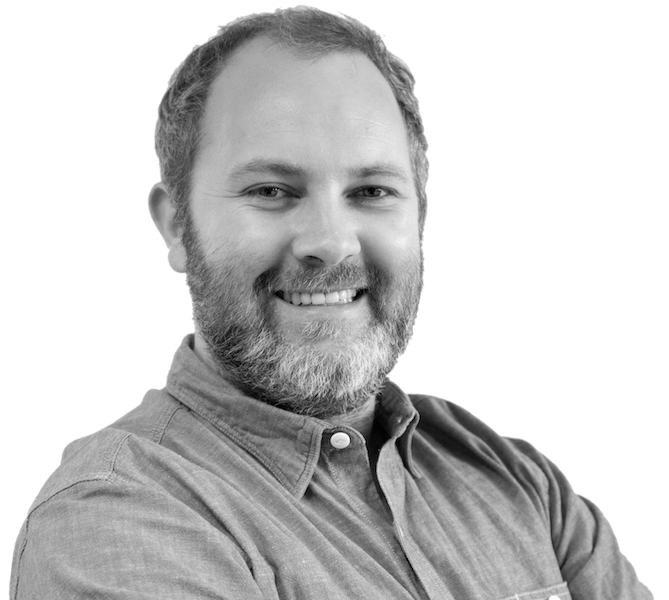
Don't Waste Your Legacy—Evolve It
The greatest growth opportunity for legacy firms is leading the strategic evolution of their marketplace.
Every market-leading firm eventually reaches a point in its life where the path to continued growth becomes unclear. Markets become saturated. Inertia replaces purpose and focus. As once-groundbreaking offerings become status quo, the firm’s relevance to its customers, investors and talent can begin to fade. Eventually, its leadership position will come into question.
For these organizations, continued success depends on finding new horizons of opportunity. But the common approaches to finding them—pursuing disruption, innovation or old-school growth strategy—too often fail to deliver.
That’s because they don’t address the specialized needs of this type of firm at this advanced stage in its lifecycle.
The greatest opportunity for mature market leaders is to lead the renewal of their marketplace into a new generation of growth. This can only happen through a process of strategic evolution.
Let’s take a look at an example of a business whose strategic evolution has borne incredible results: Sleep Country.
Until recently, they thought of themselves as the nation’s leading specialty mattress retailer. The path to—and beyond—that accomplishment involved four different approaches to growth. Each came to the fore at a different moment in the firm’s lifecycle:
-
Disruption empowered the new firm vs. established leaders
-
Innovation developed the immature marketplace
-
Growth strategy exhausted the last opportunities
-
Strategic evolution led to a new generation of growth
Disruption empowers new firms vs. established leaders
Sleep Country was founded in 1994, when mattress sales were primarily the domain of local ‘mom-and-pop’ mattress retailers, national department stores, and warehouse-based furniture showrooms. Most prioritized high-pressure sales over customer service and they frequently had questionable product quality. All were lacking either the advantages of scale (for local stores) or specialization (for department and warehouse stores).
Into this marketplace, Sleep Country introduced a commitment to quality customer service; an expert-driven, highly-personalized sales model; and, a broad footprint of specialized, welcoming and intimately-scaled stores.
How did the market leaders of the time respond? At first, they didn’t. To those invested in large, centralized locations and rich markups, this niche was not only insignificant but unappealing. It was textbook disruption. A new offering that focuses on emerging needs or increased accessibility enters a marketplace. Because at first it serves a niche that isn’t economical for incumbents, they effectively bar themselves from addressing it.
Today’s market leaders were often born in a groundbreaking moment of disruption like this. But that doesn’t make disruption a good strategy for renewing growth now, decades later. Those who attempt to “disrupt themselves” generally run head-on into one key contradiction: The power of disruption comes from the disruptor’s attention to the aspects of the marketplace that are unappealing, or even impossible, for incumbents and their existing incentives to address.
The history of disruptive innovation in large corporations is littered with attempts at workarounds. Few have overcome this fundamental incompatibility.
Innovation develops an immature marketplace
Having gained a foothold as a disruptor, Sleep Country next turned to scaling: expanding out of the niche it pioneered into core segments of the mattress market. Able to grow its footprint relatively uncontested, by 1996 Sleep Country had moved from a regional to a national player. By 2001, it had 72 stores across six regions, controlling approximately 40% of the market as the nation’s leading specialty mattress retailer.
This stage of growth was fueled by innovation. It focused on developing new or improved products and services for existing markets, and leveraging technological and operational advances for greater efficiency or reach.
For example, Sleep Country innovated new approaches to marketing and promotions. Its ground-breaking saturation of radio and TV channels with ads featuring its CEO, Christine Magee, made her and the brand’s jingle (“Why buy a mattress anywhere else?”) one of the most widely recognized in the nation. It innovated its store layouts, its merchandising and its sales strategies as well. Its invention of an in-store ‘pillow bar’ met customers’ desires to trial pillows like they could mattresses, while also driving higher-margin accessories revenue. Finally, Sleep Country innovated in operations and supply chain. It developed unique partnerships with mattress manufacturers that allowed it to manage inventory in ways that optimized return on capital.
In sum, innovation allowed Sleep Country to explore and develop its new marketplace, while remaking it in ways that left the former market leaders in the dust.
It’s no wonder that many leaders in mature firms, intuiting the cannibalistic consequences of embracing disruption, are tempted to pursue these less challenging forms of innovation instead. But the list of large firms who have launched innovation labs and venture incubators, only to soon shutter them, is seemingly endless. Often this happens after a string of bizarre and ineffective ‘innovations’ are rejected by the core business in favour of more pressing or promising priorities. It’s become a bad joke—and I say that as a past practitioner of the art.
As we will see in the next section, for a mature business that has fully saturated its marketplace, there is little runway for meaningful innovation left.
Growth strategy exhausts the last opportunities
As Sleep Country matured, its growth settled into a well-oiled groove, based on opening new stores in underserved geographies, and squeezing out same store sales growth (SSSG) quarter after quarter. Eventually, however, this strategy started to reach its ceiling. New locations offered less promising prospects. Analysts and investors, while impressed by yet another quarter of SSSG, started worrying that the rate of growth was slowing. The threat of new disruptors, selling beds in a box online, emerged.
Sleep Country needed a new strategy to deliver continued growth.
Like many in mature businesses, Sleep Country’s leaders first looked to the gold standard: old-school growth strategy, offered by illustrious management consultancies like McKinsey and Bain. Their approach is well-known. Drawing on quantitative analysis of the current landscape, they identify the optimal opportunities to bolt on new growth.
These opportunities fit a well-known pattern. Expand into new geographies, businesses or segments—Sleep Country opened stores in smaller centres, increased selection at the low and high ends, and moved into accessories like beds and bedding. Acquire complementary businesses—Sleep Country bought Endy, a leading bed in a box entrant. Unlock greater scale and efficiency through digital transformation—Sleep Country implemented ERP and launched web sales for the first time. Pursue vertical or horizontal integration more generally—Sleep Country tightened its control over its supply chain, created marketplace partnerships with retailers like Walmart, and offered its own logistics, distribution and sales services to new brands.
Through actions like these, what was once “the nation’s leading specialty mattress retailer” became “the nation’s leading omnichannel mattress and bedding retailer.” More, yes—but yet more of the same. While it captured growth around the edges, this patchwork of initiatives didn’t fully quell investors’ concerns. It didn’t fully address Sleep Country’s saturation of its marketplace, nor the emerging needs highlighted by disruptive new entrants. It didn’t level up into a compelling vision of how Sleep Country would continue to lead its marketplace for another generation.
Old-school growth strategy offers you full exploitation of your marketplace as conceived today. But at best, this doubling down on the current state only delays the inevitable. Relying on growth strategy alone turns maturity into old age, and a firm’s relevance towards decay.
Turning the threat of decline into the promise of renewal
Let’s recap. Sleep Country started out as a disruptor, bringing promising new value to a tired marketplace. Innovation allowed it to scale that impact and become the undisputed leader. It then fully exploited its leadership position in line with the precepts of old-school growth strategy. Now, the marketplace it commanded was saturated, with little room left to grow.
Sleep Country’s leaders came to the realization that they needed to start leading something bigger: the next evolution of their marketplace. Unlocking a new horizon of value would allow them to rally their customers, investors, partners and organization around a promising new strategic vision, and set the stage for another three decades of rapid growth.
In a sense, they needed the same combination of fundamental insight and focused execution that allowed them to take over the marketplace in the first place. But unlike in that initial disruption, Sleep Country was no longer a new firm. It was now blessed with a position of strength, but also cursed by a lack of agility created by the commitments and responsibilities of a mature firm. The accrued power of their leadership position, their finely-honed capabilities, and their cash-cow core offering also came with economic imperatives, organizational inertia and a straitjacket of cultural assumptions and incentives.
Strategic evolution leads to a new generation of growth
Sleep Country didn’t want to cannibalize their core business via flashy disruption, neither squander resources on innovation theatre, nor drive their cash cow until exhaustion with old-school growth strategy. They needed to find a fourth way.
That fourth way was strategic evolution, and it unfolded in three main phases:
First, like a disruptor, Sleep Country sought to unlock a new horizon of value. This meant reframing its understanding of the current marketplace: identifying more fundamental or emerging needs, and figuring out how to make them accessible.
The reframe came from a combination of understanding hidden signals of future change via a strategic foresight method, and revealing unrealized and unarticulated aspects of the human experience through anthropological fieldwork.
Sleep Country discovered that the wellness movements which had already remade the food, fitness and beauty sectors were poised to move towards sleep. They learned that the promise of a new mattress to stop ‘tossing and turning’ was no longer compelling. They realized that people were developing a more fundamental desire to remake not only their bed, but their entire sleep environment, and beyond it their sleep rituals and routines. They wanted to not only sleep well, but wake up ready to perform as their best self—energized, empathetic, and empowered.
Second, like an innovator, Sleep Country sought to identify growth platforms where they could redeploy their capabilities, equity and legacy, and pursue new offerings and initiatives that would give them a unique right to lead and win.
With the renowned expertise of their sales force as a foundation, they would strive to become a purpose-driven organization, leading a movement to awaken the world to the power of sleep. They would expand their digital and operational excellence into a world-class customer and employee experience, one that would remake how sleep products and services were marketed and delivered online, in-store and at-home. And they would evolve their strengths in merchandising and supply chain into a sleep partner platform, with Sleep Country acting as the lead firm in the emerging sleep ecosystem.
Third, like the established firm they were, Sleep Country carefully considered how to execute on the strategy in terms of the current state of the organization. They paid careful attention to factors of inertia, economic viability and cannibalization. They engaged, from the top down and bottom up, in roadmapping a path forward that the organization couldn’t wait to embrace, because it combined new desirability to the marketplace, feasibility for execution, and commercial viability in the terms that the business and its shareholders were used to.
The best first quarter ever
Twelve months after beginning its strategic evolution, Sleep Country had its best first quarter ever. Revenue was up 13% year over year. Gross profit margin increased by 710 basis points. Net income grew by 112%, and diluted earnings per share by 113%. That old, well-loved jingle—“why buy a mattress anywhere else?”—had evolved to a highly resonant new promise: “sleep well, stay well.”
Sleep Country was no longer just the nation’s leading specialty mattress retailer, but now the nation’s leading sleep partner—not only selling mattresses, but transforming lives by awakening people to the power of sleep. Leading the next evolution of their marketplace, they had rallied their customers, investors, partners and organization around a promising new strategic vision, and set the stage for another three decades of rapid growth.
—
Market dominance and leadership inevitably lead to a crossroads: decline or renewal.
When that moment comes, a market leader needs to look beyond itself. Strategic evolution of not only the firm, but also the marketplace it commands, is the right approach to growth for this advanced stage of an organization’s lifecycle. It starts that cycle again, with the organization’s rebirth into a new era of leadership and growth.
Are you ready to lead and win for decades to come? Our relevance and renewal workshop can help you take stock and take charge. Get in touch or book a call to connect.



